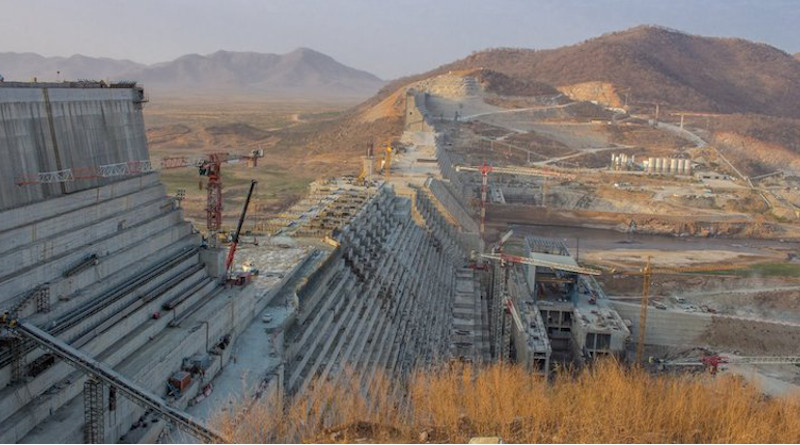Grand Ethiopian Renaissance Dam Held Hostage As Horn Of Africa Countries Wage ‘Water War’
By IDN
By Lisa Vives
Three neighbouring countries locked in a bitter dispute over rights to the precious waters of the Nile River may provide a preview of water wars around the world as global temperatures rise and droughts leave populations with insufficient water to drink or for farms.
The three countries – Ethiopia, Egypt, Sudan – are all claiming rights to Africa’s most fabled river but Ethiopia has already laid claim to the water at the source and has begun siphoning it into a $4.5 billion hydroelectric dam to the dismay of Egypt which relies on the Nile for 90 percent of its water.
The Blue Nile begins in Lake Tana, Ethiopia, and is north-flowing.
Negotiations between Egypt and Ethiopia have been going on without resolution for nearly a decade over how the Grand Ethiopian Renaissance Dam should be filled and operated.
Now the dam is almost complete and satellite images released last week show water pouring into the reservoir behind the dam. Ethiopia hopes the project will double its electricity production, bolster its economy and help unify its people.
Environmental groups such as the Oakland, California-based International Rivers, are concerned that this huge dam will flood 1,680 square kilometers of forest in northwest Ethiopia, near the Sudan border, and create a reservoir that is nearly twice as large as Lake Tana, Ethiopia’s largest natural lake. Some 20,000 people will need to be resettled for the project.
The US$5 billion scheme is out of scale for such a poor country, says International Rivers – the current cost estimate equals the country’s entire annual budget and is monopolizing government funding for the energy sector, leaving many worthy projects that would directly address the nation’s high energy poverty underfunded.
Even Eritrea has objections, according to professor Abdel Rahman Hassan of Cairo University. “Eritrea’s president already announced his position on the (dam) in 2016. He believes it exceeds the development needs of Ethiopia.”
But turning back the clock some 60 years, Ethiopia was left out of a pact between Egypt, Sudan and Britain that locked Ethiopia and other African countries out of a water-sharing 1959 Nile Waters Agreement. At the time, Egypt argued that African countries benefit from favourable rainfalls and are therefore better off than Egypt.
Meanwhile, Ethiopia today has one of the fasting growing economies in East Africa, notes Thembisa Fakude in the Middle East Monitor. An inflow of foreign investments has increased its energy needs. The Grand Renaissance Dam is a “dam for Ethiopians by Ethiopians” and a serious rallying point for nationalists, says Fakude. The Ethiopia of today will not be pushed over.

